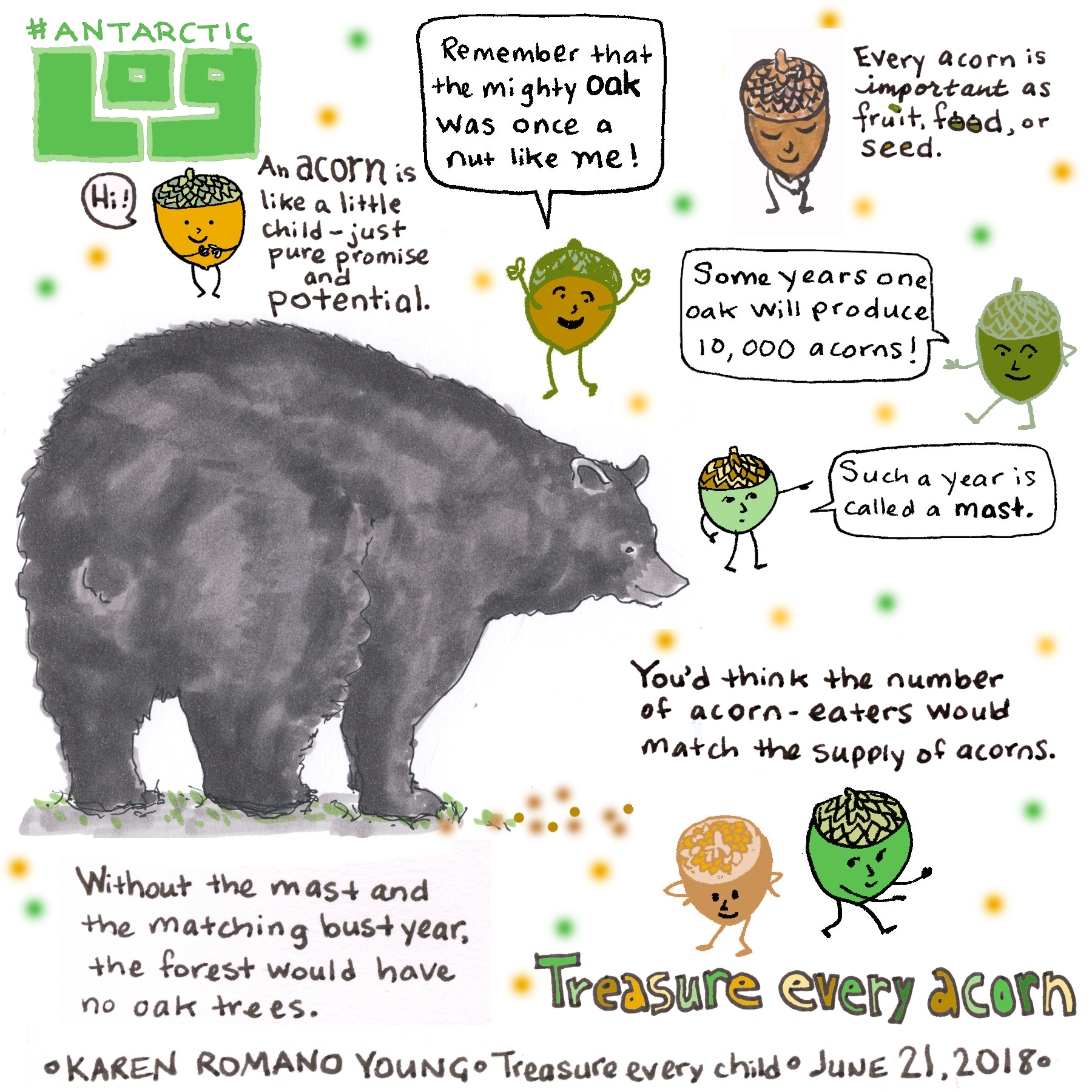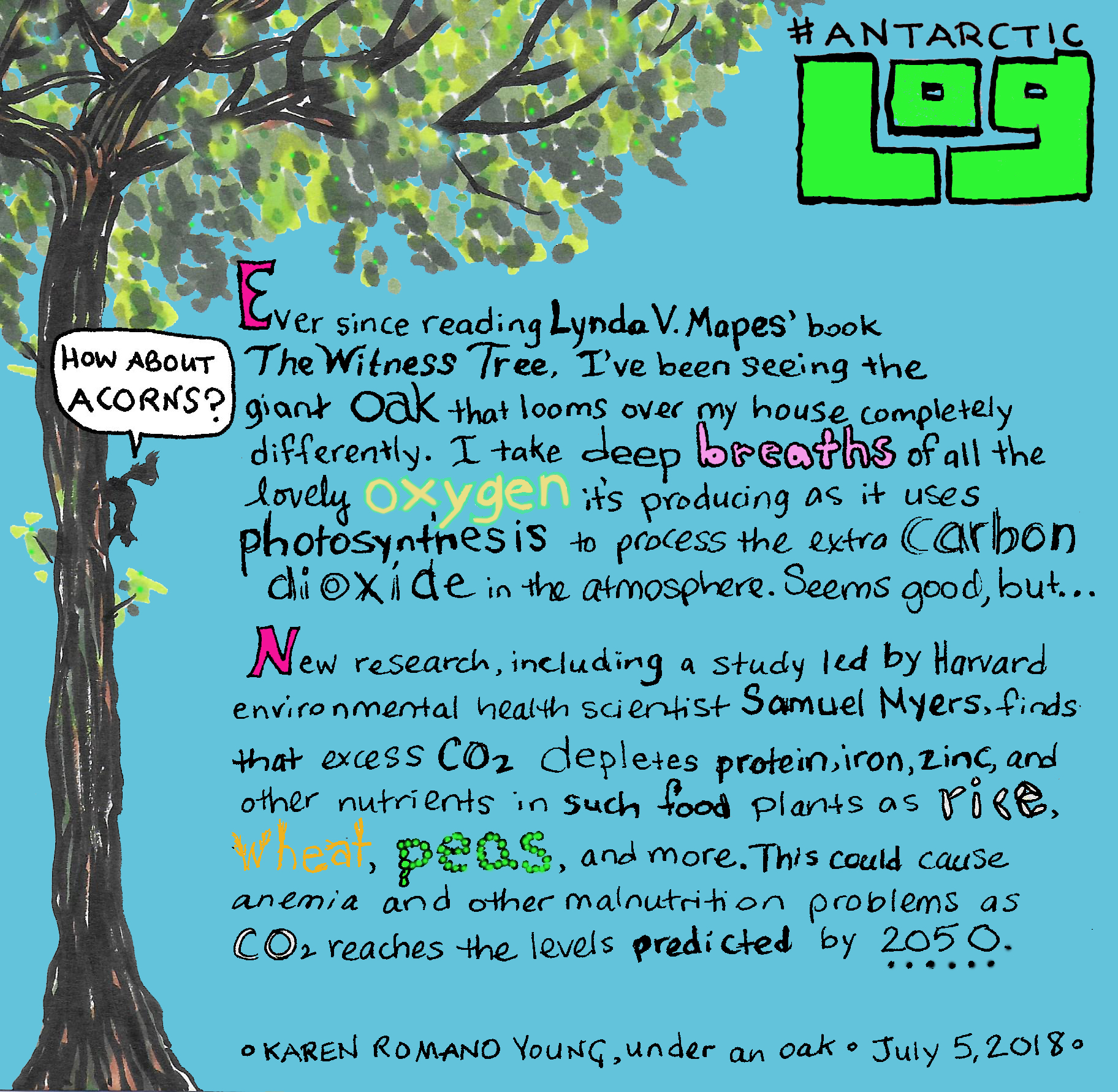4 June 2021
#AntarcticLog: Antarctic Trees (from long ago)
Posted by Shane Hanlon
#AntarcticLog is a series of comics by Karen Romano Young. You can find the originals here.
Trees?
They’re just standing there, says scientist Lynda Mapes. They’re just waiting for someone to ask for their story of climate change.
No, there are no longer trees in Antarctica — though there were, many thousands of years ago. (Did you know Antarctica used to be unfrozen? But that’s another story for another post.) But trees — especially the oak trees featured in these three #AntarcticLog comics — have plenty to say about what’s going on in their environment, and around the globe.
As thrilling as tales of Antarctica may be, there’s just something about a “canary in the coal mine” you can see by looking out your window. In my case, the canary is a massive century-old red oak full of a multigenerational clan of grey squirrels. Here’s what Mapes has learned by studying other New England oaks.

Like everyone, oaks go through phases of being superproductive (me most Mondays) — mast years — and taking it easy (me on Sundays and certain Tuesdays) — bust years. For them it’s less a matter of inspiration than prevailing conditions. Just as every little bit of writing or drawing makes a difference, every acorn is precious.

With oaks as with work life as with oxygen and carbon dioxide, the proper balance is essential. This time of year I feed my brain with forest walks, grateful for the green and for the O. And here’s a recommendation: keep an ear out in your location for guest talks by scientists at zoos, aquariums, botanical gardens, and arboretums. The stories of individual research projects feed my brain — and #AntarcticLog — the way acorns feed gray squirrels. When it comes to the stories that come out of scientists’ curiosity, there never seems to be a bust year.

–Karen Romano Young is a writer, artist, deep-sea diver, and polar explorer. Follow her on Twitter & Instagram.










 The Plainspoken Scientist is the science communication blog of AGU’s Sharing Science program. With this blog, we wish to showcase creative and effective science communication via multiple mediums and modes.
The Plainspoken Scientist is the science communication blog of AGU’s Sharing Science program. With this blog, we wish to showcase creative and effective science communication via multiple mediums and modes.